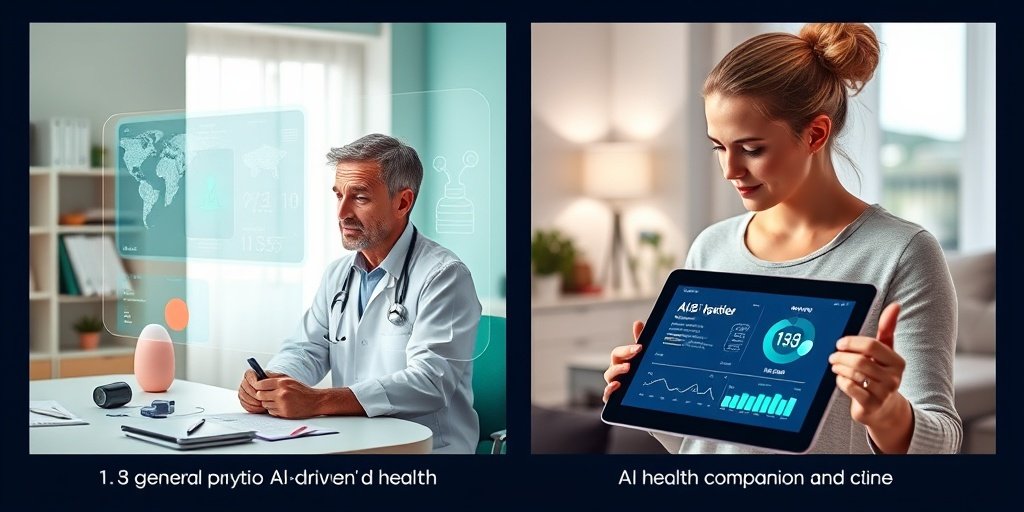⚡ Quick Summary
The recent commentary on the general practitioner (GP) scheme in Norway highlights a significant improvement, with the number of Norwegians without a designated GP nearly halved. This positive trend is supported by the integration of artificial intelligence (AI) and other technologies, which may help alleviate the burden on GPs and empower individuals in managing their health.
🔍 Key Details
- 📊 Current Situation: Norway’s GP scheme has faced a “GP crisis,” but recent funding has improved access.
- 👥 Patient Lists: Average GP patient lists are now below 1000 individuals.
- 💰 Funding: Increased baseline funding has contributed to the reduction of patients without a GP.
- 🤖 Technology: AI, wearable devices, and health companions are being explored as solutions.
🔑 Key Takeaways
- 📉 Crisis Mitigation: The number of individuals without a designated GP has decreased significantly.
- 💡 AI Potential: AI and large language models could play a crucial role in healthcare delivery.
- 👩⚕️ Empowerment: Technologies can empower individuals to manage their own health more effectively.
- 🏥 Sustainable Solutions: New strategies are needed to maintain manageable patient lists for GPs.
- 🌍 Societal Impact: Reducing the burden on GPs may lead to lower overall healthcare costs.

📚 Background
The GP scheme in Norway has been under considerable strain, often referred to as a “GP crisis.” This situation has raised concerns about access to primary healthcare and the sustainability of the GP workforce. Recent developments, however, indicate a shift towards improvement, driven by increased funding and innovative solutions.
🗒️ Study
The commentary discusses the evolving landscape of the GP scheme in Norway, emphasizing the need for sustainable solutions to address the chronic overload faced by many GPs. It highlights the potential of AI, wearable devices, and social chatbots to assist in healthcare delivery and patient management.
📈 Results
The commentary notes that the average GP patient list has decreased to fewer than 1000 individuals for the first time, a significant milestone in addressing the GP crisis. This improvement is attributed to increased funding and the potential integration of technology in healthcare practices.
🌍 Impact and Implications
The integration of AI and other technologies in the GP scheme could revolutionize how healthcare is delivered in Norway. By empowering individuals to take charge of their health and alleviating the burden on GPs, these innovations may lead to improved patient outcomes and reduced healthcare costs for society as a whole.
🔮 Conclusion
The commentary underscores the transformative potential of AI and technology in the healthcare sector, particularly within the GP scheme. As Norway navigates its GP crisis, embracing these innovations could pave the way for a more sustainable and effective healthcare system. Continued research and implementation of these technologies are essential for future success.
💬 Your comments
What are your thoughts on the integration of AI in healthcare? Do you believe it can truly alleviate the pressures faced by GPs? Let’s discuss! 💬 Share your insights in the comments below or connect with us on social media:
Artificial intelligence, health empowerment, and the general practitioner scheme.
Abstract
The general practitioner (GP) scheme in Norway has long been under pressure, and in recent years, several media outlets have referred to the situation as a “GP crisis.” Over the past year, however, this trend has begun to shift. Bolstered by increased baseline funding, the number of Norwegians without a designated GP has been nearly halved. Predicating this improvement is the fact that GP patient lists are gradually becoming shorter. For the first time, the average GP list now includes fewer than 1000 individuals. To maintain this positive development, either more physicians must choose to become GPs-which would likely come at significant cost to municipalities and the state-or solutions must be implemented that allow for sustainable patient list sizes while mitigating the chronic overload that many GPs have faced. At the same time, artificial intelligence (AI) and large language models may offer promising capabilities in this setting. In this commentary, we explore how AI, wearable devices, everyday technologies, social chatbots, and “health companions” could help alleviate the burden on the GP scheme, empower individuals in managing their own health, and reduce overall societal healthcare costs.
Author: [‘Krumsvik RJ’, ‘Johansen MO’, ‘Slettvoll V’]
Journal: Digit Health
Citation: Krumsvik RJ, et al. Artificial intelligence, health empowerment, and the general practitioner scheme. Artificial intelligence, health empowerment, and the general practitioner scheme. 2025; 11:20552076251365006. doi: 10.1177/20552076251365006